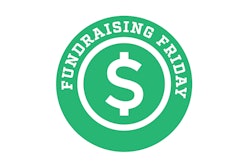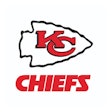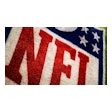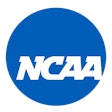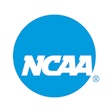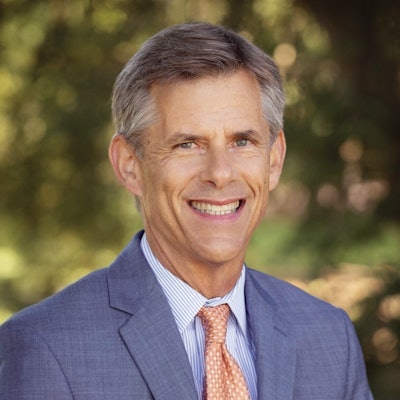 University of Illinois Law Professor Michael LeRoy
University of Illinois Law Professor Michael LeRoy
What motivated you to discuss Title IX in Sportico?
My research, frankly. I have an NIL research project underway. I FOIA’d all Power Five conference schools. Even the private ones, I would just send my request to the general counsel’s office, but they’re not under any FOIA law. So, I was just tallying up my response rate — I had 26 responses out of 65 FOIA requests. And among the things I asked for was an anonymized database for their NIL deals, from the 2022-23 academic year. One school, on condition of anonymity, provided their data. And as I went through it, I found that 89 percent of the NIL money went to men’s athletes. This is part of my law review article looking at Title IX compliance. It’s so skewed in favor of men. And, again, this law review article is more than an opinion piece. I mean, there certainly is a viewpoint there, but it really is asking, “What does the law say?” So, when I wrote it, I said, “You know, you should take a couple of hours to kind of boil this down and put it in an opinion piece, just in case.” And so that’s where that came from.
Cara Bognar, a senior on the University of Illinois women’s swimming and diving team, has founded Top Tier Lessons, a sports-tech platform facilitating a marketplace for college athletes to sell their private coaching services to youth athletes. What do you make of that?
Good for her. The most common form of NIL deal is a social media post. But this coaching clinic idea — coaching services — has been around since the inception of NIL, and it really is a worthy activity. And it really is a service provided for NIL, which is sort of different from where we are now. I would not categorize that as pay for play. I would categorize that as pay for a service, and I think that’s just great.
What words would you choose to describe the current state of college sports?
Chaos. A race to the bottom. A fight for survival of the fittest. That’s my summary. People on the inside, of course, put a better face on it. In my own research three years ago on COVID-19 safety protocols, I had three conversations with senior athletic department officials at three different schools in two different conferences, and you could see that they had unease. They were just amazed with the landscape they were in. They all were telling me kind of the same thing, which is kind of a softer version of the chaos model.
In your latest Sportico piece, you mention that a federal judge dismissed a lawsuit seeking reinstatement of the University of North Dakota women’s hockey team, because the players filing the suit no longer had college eligibility. I’m not a lawyer, but would you recommend that plaintiffs frame their arguments on behalf of not only themselves and their own immediate athletics careers, but also for all future women aspiring to attend and compete in that sport at that university? Would that make it harder for judges to dismiss based on the eligibility of the plaintiffs?
That is an exceptionally good question. I have the same frustration with this. There’s a course in law schools called administrative law, and you could take that case and its very narrow ruling and put it in there. The conceptual difficulty with Title IX is that Title IX is a one-paragraph statute that doesn’t even talk specifically about athletics. It just talks about nondiscrimination in federally funded educational programs. It’s not even college-specific. So, the Department of Education has come out with a series of mind-numbingly detailed regulations on what this looks like in the athletics space — especially for college athletics. They’ve had several iterations. So, the Eighth Circuit that was reviewing the dismissal order really got into those weeds. Title IX regulations are so narrowly and technically drawn that a lawyer looking at it would say, “I get your point, but I have to cite some regulations. I can’t cite just fairness issues.” I think that’s kind of what you’re driving at. Also in my article, I mentioned the Balow v. Michigan State case in which Michigan State settled that lawsuit monetarily because those women’s swimming and diving student-athletes had run out of eligibility. That’s different from the UND case, because the UND case basically came out as a real win for the university, and I think that’s why you’re asking the question. The athletes filed again and were dismissed because now their eligibility was exhausted. The school had legal expenses, but they got the job done.
Obviously, part of their fight was to get their team back. But I think they wanted the program back, period. Don’t you?
They did. I completely agree with you. My frustration with that case is that it demonstrates how inadequate Title IX is as it relates to college women’s athletics.
As a safeguard. It’s not doing what it should, right?
Exactly. I’ll go back to the articles I’ve written. There’s an article, “Harassment, Mistreatment, and Abuse in College Sports” published in the Berkeley Journal of Employment & Labor Law. I look at a different context. I look at situations where men and women are harmed by coaches or fellow athletes, and they file lawsuits. I found that over 70 percent of the complainants or plaintiffs were women. Most of these cases came up as Title IX lawsuits, and they lost. So not only is Title IX disappointing from a participation standpoint, but it’s very disappointing in terms of outcomes for women who are victims of sexual assault or body shaming or similar at the hands of coaches and/or fellow athletes.
Those fit into Title IX because those acts against those women deny them the unfettered educational opportunities that Title IX should protect. Am I right?
Exactly. In that article, I quantify how often the schools and administrators won against the complainant, or the plaintiffs. It’s on the order of two to one that the schools and administrators and coaches win those.
Let’s go back to Michigan State. You write in Sportico, “After several rounds of litigation, the women prevailed when a judge ruled Michigan State was not in compliance with Title IX. But the school was not legally required to reinstate the program and has not done so.” My question to you, if Title IX is the law, why wasn’t Michigan State legally required to reinstate women’s swimming and diving? I mean, does Title IX have no teeth at all?
I would say Title IX has very weak remedies for women athletes — very weak remedies. It’s really a law that promises a lot and delivers very little for women. That’s my best way of putting it.
We touched on name, image and likeness at the start of our conversation. What do you think of the NIL era to date?
I’ll try to list some outcomes serially. In this paper that I’m writing, I am describing four different evolutionary terms in NIL in two and a half years. The first was the endorsement model. The second was the collective model. There’s a third emerging model of a joint-venture model at the University of Alabama, where they’re bringing a joint venture inside their athletic program to help with the marketing and the branding and the NIL deals. But what makes that a little different for me is that it’s physically inside the school. And there is a fourth model that has not been implemented, but I’m referencing Florida State’s interest in a private equity deal. I would just say sort of a second sort of conclusion I’m reaching is that the more lucrative NIL deals are — in my thinking — a proxy for the labor market value of athletes. That’s what the schools are purchasing. It’s telling you what their intrinsic labor value is.
I understood the argument many years ago that student-athletes deserved a cut on such things as the sale of jerseys bearing their number, but I now feel I was completely naïve to think that’s where it would end.
I think everybody has been naive about where this was heading. I mean, I don’t think anybody could have foreseen this kind of supercharged, monetized atmosphere. Rather than sort of say, “Gosh, I didn’t see it coming,” I will tell you I didn’t see any of this coming, and my writing has been published in this area since 2012. I didn’t see any of it coming, okay? And even though I keep studying it, I would be loath to say that I know the future of NIL in college athletics. I don’t. I feel like a storm chaser, and it’s like I started driving when the tornado was an EF1, and I’m racing as fast as I can, and it’s an EF4. It’s that kind of thing. It’s crazy. By the way, until about 12 years ago, I was drinking the Kool Aid of NCAA athletics as a University of Illinois and University of North Carolina law grad. I’ve been anchored in the college experience, college towns, cheering my schools on and all of that. And so, I didn’t question this, and it just never occurred to me. Things have changed. You probably know about it, but there was a current major antitrust lawsuit against the NCAA. It’s in effect the NCAA rule denying group licensing agreements to athletes and reserving all of that money for schools. That antitrust case is going to trial in January 2025. And, interestingly, there’s a University of Illinois former football player who’s one of the three lead plaintiffs in that. The point of that lawsuit is to get broadcast NIL. Why don’t athletes get any of this money? But it also gets into the GLA stuff. That’s the jersey situation. In the NFL, the individual player gets a part for his jersey, then the NFLPA gets another part that’s distributed out to all the players, and the league keeps its cut of it separately.
Should athletic departments become true employers and student-athletes their employees?
I think for Power Five — I don’t even know if we have Power Five anymore, but I’m gonna run with it — for Power Five conference football programs and men’s basketball programs, definitively yes. In my brief, I make the argument — and it’s a very simple argument — that the athletes are misclassified as amateurs, when they are employees. And what I do is I look at the NCAA rulebook, which is published, and I look at the Fair Labor Standards Act, which does have a very broad definition of work. And I went through the rulebook just with a word search — it’s a searchable database — and in my brief, I just highlighted the word “work” — for example, “work out” with a coach present. So, I just say that even on the face of the NCAA rules, these are admissions of an employment relationship, straight up. Now, we’ll see what the Third Circuit has to say about this in Johnson v. NCAA. If we get an outcome that is favorable to the athletes, we’re years away from a conclusive outcome. It would go back to the trial court, and then there would be what I call line-drawing. But to just stick to the low-hanging fruit on this, especially since the Big Ten and now the ACC have become transcontinental conferences, when you just look at travel time, just tease out that piece, travel time for a nonprofessional employee is compensable. So as an illustration, you have cement truck drivers in Madison, Wis., and they’re going to pick up a load, and they’re going to drive up to Baraboo and drop it there. There’s no concrete being poured or dumped, but their travel time from Madison up to Baraboo is compensable. So, if you have the Wisconsin Badgers volleyball team traveling out to Los Angeles, by my sights, when they take their bus from the congregating point out to the airport and so forth, that’s compensable time. And I just think that that time is a free good to the school. Not just Wisconsin. It’s a free good to Illinois and these other schools. It’s not a free good if they’re employees. Even the behind-the-scenes time, the practice time, the conditioning time, anytime they’re under the control of a coach or a trainer, It’s compensable. They have a lot of time that is tied up an athletic activity.
Illinois struggles to fill Memorial Stadium on football Saturdays. How is the Big Ten’s transition to an 18-team format with no divisions going to help Illinois increase interest in one of its marquee sports?
I have to choose my words carefully. First of all, I agree with everything you’re thinking about here. But I think this goes back to the top of our interview. You asked me, “What’s my description?” I said, “Chaos, a race to the bottom, and a fight for the survival of the fittest.” You know, I think we’re evolving to the point where we’re going to get 20, 24, 30… Look at professional sports. You get approximately 30 franchises, 32. I think that is the template for the eventual outcome of college athletics. Ohio State, Michigan? They’re in. USC? In. You know, filling out the first 20 is easy. Filling out the next 10 or 12 is kind of chancy. And then there are a lot of what I would call middle-tier schools that are kind of battling to stay in that designation. I’m not predicting, but I can imagine a world where they divvy up the shares so that the power schools get the biggest slice of the pie, the middle-tier gets to keep its current whatever, and the bottom third take a pay cut. And what I’m suggesting to you is I can imagine a world where, instead of having relegation like the European soccer league, what you might have is internal relegation, where the lesser schools are still part of the media deal, but I don’t know what the deal looks like. But what I’m saying is, I don’t take it as a given that the equal-share formula is going to be here in perpetuity. I think that addresses your question, which is, “What’s happening to the so-so schools or the stragglers?” I mean, in my opinion, they’re not long for the world — not in their current state. Washington State and Oregon State are the canaries in the coal mine. I mean, Boston College, does anybody really see a great future for them? I have a hard time seeing that.
Getting back to women’s sports, do you think conference realignment might actually discourage women’s sports participation moving forward, given the mental health burden of traveling coast to coast?
That is such a good question. So let me just say, in the past year and a half or so, I’ve had graduate students and law students at other schools contact me about my research. These are not large numbers — 10 to 12 people — and they’re reaching out to me because they have specific research projects that they’re working on. And more than half are women. I had a Harvard law student, female, she’s on Harvard Law Review. And she was on Harvard’s soccer team. But to get to your point, I said, “Can I ask you just a couple of questions? You don’t have to answer them.” “Sure.” I said, “When you were in season, how many hours at Harvard did you spend on your sport?” She said, “40.” I said, “When you were out of season, how many hours did you spend on your sport?” “Twenty.” I currently teach a course called Collective Bargaining In Sports and Entertainment. It’s a graduate-level course here at the University of Illinois. I have 25 students. Two of my current students are women — a Division I lacrosse player at a different school, and a Division III soccer player. And they have really opened up in class about what life was like for them. The soccer player said that, as a team captain, she was given the list of drills to do that were off the books and not going to be counted against the NCAA’s count. And it got more and more onerous, and the coach got more and more demanding. And she said her senior year, she’d had it, and she eventually reported this activity to her athletic director, and the coach was fired. She said, the mental health strain was terrible. And she said, “I gave the girls on the team a going away present — a better coach.” And the athlete in the Division I lacrosse program said she had a really good coach, but she said, “Our coach told us, ‘When you are here as a lacrosse player, I expect a 40-hour work week from you when we’re in season.” I think those are concrete illustrations of really pressing problems, and they’re going to get worse.
What’s your worst-case scenario for college athletics moving forward?
You have a huge antitrust lawsuit before the same judge who ruled in favor of athletes in O’Bannon and Austin. That is a real threat to the financial wellbeing of college athletic programs, because we know how she decides. We have Johnson v. NCAA. So, what I’m getting at is the NCAA and the conferences have lost control of the managing of their own affairs. Now, they have a de facto arrangement where they’re letting courts work this out and hoping that Charlie Baker at the NCAA shields them from liability. There’s a fair chance of that happening. It’s not going to happen. But this litigation is really slow, and so I think damages will pile up, and in my worst-case scenario, you get crippling damages in the antitrust case and in Johnson v. NCAA, which then sets up the idea of the elite athletic programs — the Ohio States, the Michigans, the Alabamas — forming a professional college league and separating from the NCAA, and leaving the rest of the schools holding the bag with liability. I think if not inevitable, that’s more and more foreseeable. I think we have more Oregon States and Washington States in the offing. This is where I think it’s heading. You know, we have lost the sort of fraternal bonds that connected schools in a conference. I remember when I came back here in the mid-1980s, you would turn on the radio on a Big Ten Saturday, and they would play a medley of fight songs for all the Big Ten schools, and then they would end with Illinois. And it would give you goosebumps, okay? But, to me, that sort of was a signature moment where you said, “We are brothers. We’re going to fight against each other, but we are brothers.” There’s none of that now.
What is your best-case scenario?
I’ve got two answers for you. The best outcome would be the NCAA’s legislation is enacted, and it would basically immunize college athletic programs from any kind of employment-related lawsuits and any kind of antitrust lawsuits. And the reason I would categorize that as the best outcome is you’ll just see a sort of a shield over the programs, and athletic directors would say, “That’s the best outcome for us. We don’t want to pay damages. We don’t want our business model messed up by courts.” That’s one version. I thought about this, and I thought ahead to the case that I have briefed in Johnson v. NCAA. I do think that is heading to the U.S. Supreme Court, and my way of thinking about it is that, ironically, the costs associated with athletics if you categorize athletes as employees would really force a rethinking of this. You would be dropping sports or peeling away men’s basketball and football. And then I also think that if you’re going to pay athletes for their time, it’s not a free good anymore. And I can tell you as somebody who has studied labor relations for 35 years, employers think hard about overtime and what it means for them. And so I think, ironically, we would get a version of amateur athletics coming out of a ruling that called athletes employees. Oddly enough, a favorable ruling for the athletes would restore some degree of amateurism. If you had amateurism, then you would, I think, evolve back toward a regional kind of sports model.

















